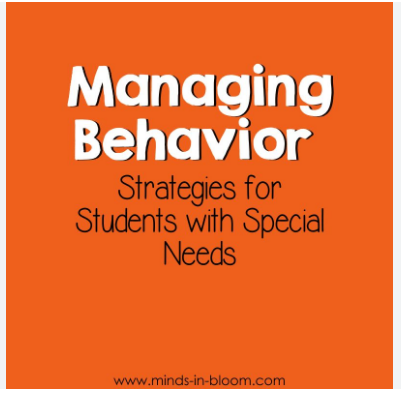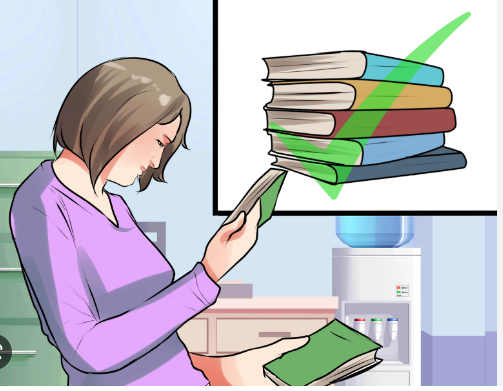Management of Special Education
1.0 Introduction
Management of Special Education
Students with some types of disabilities, such as those with sensory impairment and emotional and behavioural disorders, normally require specialised schooling because their condition restricts them from learning effectively compared to students without disabilities or other forms of disabilities. The introductory lecture exposes you to the concept of special education. In addition, the concept of disability and the types of disabilities that make students require special educational needs are elucidated. Various ways of helping students with disabilities in school contexts are explained.
1.1 Objectives
Upon successful completion of this lecture, a student should be able to:
|
1.2 The Concept of Special Education
Special education (SE) is used synonymously with an exceptional education. Special Education is an umbrella term broadly used to identify the academic, physical, cognitive and social-emotional instruction offered to children with one or more disabilities. Heward (2006) defined SE as the purposeful interventions designed to prevent, eliminate, or overcome the obstacles that might hinder an individual with disabilities from learning and full and active participation in school and society.
Special education aims at accommodating students with various disabilities such as behavioural and emotional disorders, cognitive or intellectual impairments, sensory impairments, mostly hearing and visual impairments.
It also includes educating students with speech and learning disabilities, to name a few and gifted and talented learners. Sometimes, SE is synonymous with special needs education and exceptional education concepts.
1.3 The Concept of Disability
How can you describe a disability? According to the convention on the rights of persons with disabilities (United Nations, 2014), a disability is an evolving concept. It results from the interaction between a person’s impairment and obstacles such as physical barriers and prevailing attitudes that prevent their participation in society.
The more obstacles there are, the more disabled a person becomes. Persons with disabilities have long-term physical, mental, intellectual, or sensory impairments such as blindness, deafness, impaired mobility, and developmental impairments. Some people may have more than one form of disability, if not most people, and will acquire a disability at some time in their life due to physical injury, disease or ageing.
Categories of disabilities
WHO (2000) described disability as an umbrella term covering impairment, activity limitations and participation restrictions. An impairment means any loss or abnormality of a psychological, physiological or anatomical structure or function that restrict an individual in executing a task or action.
Activity limitations are difficulties an individual encounters in his or her involvement in life situations. On the other hand, participation limitations are problems experienced by an individual in his or her involvement in life situations (handicap). Special needs for students with disabilities can be categorised into four categories:
- Emotional and Behavioural Disorders (EBD)
Emotional and Behavioural Disorders (EBD) is an umbrella term. Several specific diagnoses fall into EBD, such as Psychiatric Disorder (Anxiety Disorder, Manic-Depressive Disorder, Obsessive-Compulsive Disorder, Psychotic Disorder and Eating Disorders as anorexia, bulimia, and binge-eating disorder).
It also involves Behavioural Disabilities (Oppositional-Defiant Disorders, and conduct disorders such as Attachment Disorder and Attention Deficit Hyperactivity Disorder. Students with behavioural disabilities engage in disruptive classroom behaviour and/or harm themselves and others.
The Individuals with Disabilities Education Act (IDEA) characterised children and young people with EBDs as exhibiting one or more of the following characteristics: “An inability to learn that cannot be explained by intellectual, sensory or health factors;
An inability to build or maintain satisfactory interpersonal relationships with peers and teachers; Inappropriate types of behaviour or feelings under normal circumstances; A general pervasive mood of unhappiness or depression; and a tendency to develop physical symptoms or fears associated with personal or school problems”.
Researches indicate that students with psychiatric disorders present a profound challenge in schools for several reasons: First, Students who struggle with these challenges often undergo treatment and may receive medication. Medication can affect them in unexpected ways, and because medical information is confidential, teachers may be unaware of why students act the way they are. This makes it difficult to respond appropriately to particular students’ behaviours. Second, schools are not hospitals, and teachers cannot be expected to treat or cure these disorders. Third, students suffering from these conditions may not meet academic and behavioural expectations. In such cases, students need to receive special education interventions of some sort and may need to be moved into a special education classroom.
What are the unique needs of students with EBD’s?
Students with EBD’s require unique needs to achieve in their learning as other students with and without disabilities. However, Landrum et al. (2003) state that “describing what special education for students with EBD presents a uniquely difficult challenge, given that students with EBD probably experience less school success than any other subgroup of students with or without disabilities“. Students who suffer from Emotional and Behavioural Disorders, or EBD, often find it very difficult to control their behaviour and focus on their work in the classroom. EBD students also commonly lack the impulse control and emotional balance necessary to effectively handle social interactions with other students. In that regard, students with EBD require rewards when they achieve positive behaviours. They also need to have mini-breaks and fair treatment for all. On top of that, they need to be offered incentives for academic successes and praise for their excellent efforts consistently.
- Cognition and learning difficulties
Cognition and learning difficulties are umbrella terms that emphasise a person’s difficulties to learn. Such a person may have particular difficulty learning to read, write, spell or manipulate numbers so that his or her performance in these areas is below-average. Students with specific learning difficulties include those with:
(a) Specific Learning Difficulties. These refer to a range of disorders in which one or more basic psychological processes involved in the comprehensive/usage of spoken or written language establishes an impairment in one’s ability to listen, think, read, write, spell and/or complete mathematical calculations. It includes conditions such as perceptual disabilities, dyslexia, brain injury, minimal brain dysfunction and developmental aphasia
(b) Moderate Learning Difficulty (MLD) – numeracy and literacy, speech or language delay, low self-esteem or concentration or underdeveloped social skills.
(c) Severe Learning Difficulty (SLD) – significant intellectual or cognitive impairments. Mobility, communication, perception or coordination difficulties.
(d) Profound & Multiple Learning Difficulty (PMLD)
- Communication and interaction disorders
Communication and interaction disorders may include social interaction, social cognition, and pragmatics problems. A social communication disorder may occur within the context of other conditions, such as:
(a) Speech /Language impairment is defined as communication disorders that include stuttering, impaired articulation or language or voice impairment. These forms of impairment have an adverse effect on students’ academic performance.
(b) Autism spectrum disorder (ASD). This is a developmental disability that significantly affects communication (verbal and non-verbal) and a person’s social interaction.
(c) Learning disabilities (LD),
(d) Language learning disabilities (LLD),
(e) Intellectual disabilities (ID),
(f) Developmental disabilities (DD),
(g) Attention deficit hyperactivity disorder (ADHD), and
(h) Traumatic brain injury (TBI).
- Physical and sensory disabilities
A physical disability is any type of physical condition that significantly impacts one or more of the major life activities. It limits a person’s physical functioning, mobility, dexterity or stamina. Sensory impairments limit other facets of daily living, such as seeing hearing and touch. Students with sensory impairment include those with:
- Visual Impairment (VI)
- Hearing Impairment (HI)
- Multi-Sensory Impairment (MSI)
- Physical Disability (PD)
How to help students with special needs in schools?
- Maintain an organised classroom and limit distractions. Maintaining a healthy balance of structure and unstructured processes for students with special needs is essential. Schedule breaks throughout the day and seat students with special needs in an area of the classroom that limits distractions
- Use music and voice tone. When changing activity, use a short song to finish one task and move to another. Students with special needs respond well to varied voice inflexion and tone, so use a mixture of loud, soft, and whisper sounds. Use proper pronunciation that will help a child model the same principles.
- Break down instructions into smaller, manageable tasks. Students with special needs often have difficulty understanding long instructions at once. Use simple, concrete sentences when giving directions both in print and verbally. Ask special needs students to repeat the directions to demonstrate that they understand.
- Use multi-sensory strategies. Children learn in different ways. It is vital to prepare lessons as multi-sensory as possible. Students with learning disabilities might have difficulty in one area while excelling in another. For example, use visual, audio as well as tactile experiences.
- Give students with special needs opportunities for success. Children with learning disabilities often feel unconfident in most courses, so structuring lessons that lead to successful results is a way to motivate them.
These suggestions are ideal for classroom settings, but parents of students with special needs can also implement these principles. Helping children with learning disabilities both in and out of the classroom is the best way to help them succeed
Exercise
|
References
Hornby, G. (2014). Inclusive Special Education: Evidence-Based Practices for Children with Special Needs and Disabilities. In Inclusive Special Education. Springer US. https://doi.org/10.1007/978-1-4939-1483-8
Landrum, T. J., Tankersley, M., & Kauffman, J. M. (2003). What is Special about Special Education for Students with Emotional or Behavioral Disorders? Journal of Special Education, 37(3), 148–156. https://doi.org/10.1177/00224669030370030401
Last modified: Tuesday, 27 September 2022, 11:01 AM




